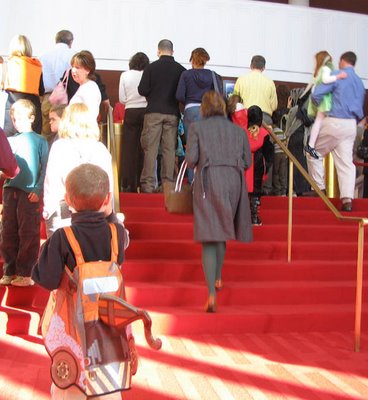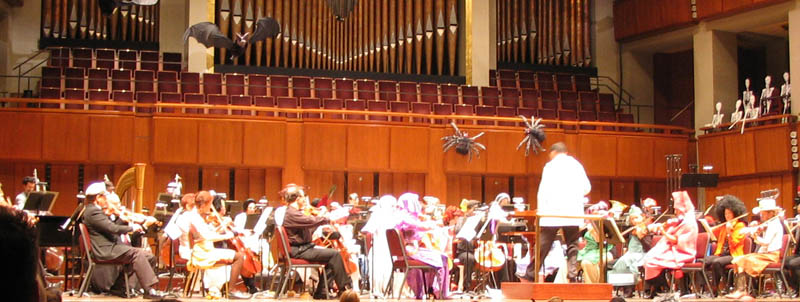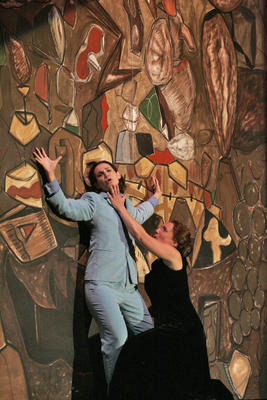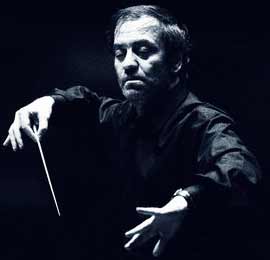Interview with Pinchas Zukerman
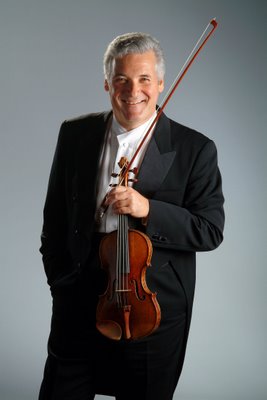 Earlier today I had the opportunity to interview Pinchas Zukerman for WGMS' "Classical Conversations". This follows an interview with Ivan Fischer and one with Leonard Slatkin (due to go up in December).
Earlier today I had the opportunity to interview Pinchas Zukerman for WGMS' "Classical Conversations". This follows an interview with Ivan Fischer and one with Leonard Slatkin (due to go up in December).
This Thursday, Friday, and Saturday, Pinchas Zukerman will step into the void that Rostropovich’s cancellation of his series of Shostakovich programs with Maxim Vengeroff and Martha Argerich left (Yo-Yo Ma is still scheduled to perform). He will do so with an entirely new program – The Vorspiel to Wagner’s Die Meistersinger, Bruch’s über-gorgeous Kol Nidrei with cellist Amanda Forsyth as the soloist, conducting as the soloist in Mozart’s Violin Concerto No.5 and closing with Beethoven’s Second Symphony.
The question for the ticket holders that were looking forward to Vengeroff, Argerich, and Rostropovich’s Shostakovich must be, why no semblance to the original program was preserved – especially since the concerts were advertised as such until the day the cancellation was made public. Zukerman’s answer sheds light on that question: He was not asked to substitute for “Slava” (“You cannot replace Mr. Rostropovich”) but to fill a gap while the NSO management is trying to preserve the Rostropovich/Shostakovich festival in its integrity, to reprogram it at a future date when (if) Rostropovich is again fit to perform. (WPAS apparently helped out with the last minute substitution.) Washington ‘is an old friend’ to Zukerman; almost like a second home (Zukerman knows the NSO for almost 45 years) and feels warmly embraced by the audience, so he was happy to jump into the breach since he had an available free week. He reminisces at length about his memories of playing in Washington (at the Kennedy Center, at Dumbarton Oaks) over the last three decades and about his musical friends in this town.
Jens F. Laurson, Itzhak Perlman: A Star Flickering, Not Shining (April 2006) Jens F. Laurson, Raff Time for Bach as Zukerman Heralds Harold (October 2005) Jens F. Laurson, Shostakovich Postponed, Zukerman to the Rescue (November 2006) NSO Performance of Wagner, Bruch, Mozart, Beethoven (Thursday, Friday, Saturday, November 2, 3, 4, 2006) WGMS Recital at Strathmore with Bach, Schumann, Mendelssohn, Shostakovich (Friday, December 1, 2006) Zukerman Chamber Players in Mozart & Dvořák at the Terrace Theater (Friday, March 4, 2007) |
On the question about the difference between conducting and performing he reveals that, although he has been conducting since 1972, it has taken ten to fifteen years to feel comfortable on the podium. Now it is an expansion and extension of his music making; almost like playing enlarged chamber music, except that he happens to be beating it, instead of playing it. He has no plans, however, to expand the conducting vis-à-vis playing; dividing between his conducting and soloist duties in the same ratio as he always has.
Since the featured cellist Amanda Forsyth is his wife, I ask him if he ever feels that listeners or critics might conclude “Nepotism!” before having giving the performance a chance to proof itself. Zukerman is not too concerned with that, stating up front that if he did not think she couldn’t do it and stand on her own two feet, he wouldn’t program her. “If I didn’t think she was a phenomenal player, believe me, she wouldn’t be playing! That’s about honesty to the music... I’ve been this way with wives – and it’s the same thing with my daughter, who is a singer [Arianna Zukerman, reviewed on Ionarts last December], or friends.” Their relationship – professional and personal – is one where both can and do tell each other the flaws they hear in the other’s playing, Zukerman claims, which he extols as a particular pleasure in cooperating with another musician.
Since there have been some remarks about ‘HIP’ music-making by Zukerman (Charles has commented on them, reviewing Victoria Mullova’s second to last CD on Onyx), I can’t help but probe a little. His Bach Viola da Gamba Sonatas performance for WPAS (December 1st) is just the way to do it – and hearing him go off with conviction and passion on the “garbage” that is the theory of vibrato not having been widely employed until after the second world war is the interviewer’s equivalent of hitting the jackpot. After saying “let’s not get into it, too much”, he speaks a solid five minutes about his reasoning.
“I call it a slight furuncle… it’s like a diseased little aspect of what we are as a society – and hopefully we will find real medication for it to go away in the future. And I can’t believe it will last very long. It can’t.”
When a composer of merit says “non-vibrato”, it’s a specific indication to the practitioner for a specific color they want in that particular spot. Like a ‘forte’ or ‘piu mosso’ or ‘ponticello’. No composer, nobody, wrote ‘non-vibrato’ for the sake of being ‘authentic’. “That’s a fact – a theoretical fact, but also a composer’s fact. Ask any composer of merit and they’ll tell you that. And if they don’t, their music is not listenable.” “Non-vibrato is like making a picture without ever taking the pencil off the paper. What kind of picture would you be getting!?”
We’ll be able to look forward to getting the picture with vibrating Beethoven et al. on Thursday.

[Update:]
The audio file of the WGMS interview can be downloaded as an mp3 or Windows Media Player file at these links.
